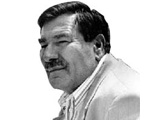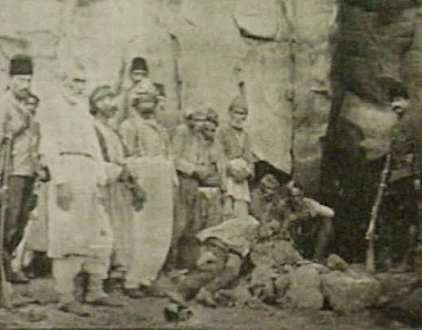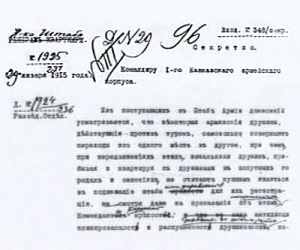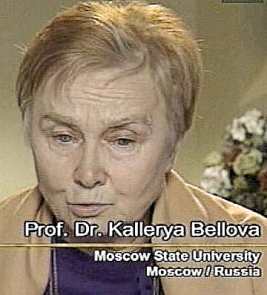A nation proud of a massacre is joyfully dropping a note to the history!
This text is from Zori Balayan’s book “Revival of our souls” from 1996 , pages 260-262. This paragraph is the most disgusting thing I have ever read. I haven’t even heard of an Armenian response to this paragraph. A nation proud of a massacre is joyfully dropping a note to the history!
And then we see the Armenian representatives lecturing in America and Europe about humanity, human rights, genocide. And policy makers are applauding. Not even one of them dare to ask the question “What has happened in Khojali?”, “Why are you still occupying your neighbour’s land?” .Yet, poor Armenian policy makers are expressing their security concerns about Turkey.
If it is just to pressurize Turks more, then humanity is nothing but a lip service. If humanity is degraded to a lip service, and eyes are closed to what has happened in Khojali, how come we believe that Armenian lobby is true in its aims about human history, human rights and other humanized terms that they recklessly waste to gain political power. Cutting his mother’s breast, silencing the boy by stuffing the cut breast into boy’s mouth and skinning the boy alive! And yes, honourable men and women in Capitol Hill. Raise your fingers to award the worst criminals of the near history. Do not even mention Khojali. Do not think of the brutually murdered thousands!
Now you may be thinking that, the title is irrelevant to the content. After thinking about Khojali and an Armenia occupying its neighbour’s land, how sincere do you think the Armenians are? With the blood of Khojali on their hands, they are forcing politicians to accept Turkey to EU if Turkey accepts Armenian claims. No, Armenians should first accept Khojali and then they should start spelling Ottoman Armenians. There is no sincerety in any of the Armenian claims.
Now, ask yourselves another question. Who will gain most from the Armenian lobby’s pressure on Capitol Hill. United States or Putin’s Russia? May be this is just like an ordinary debate for American readers. But for Turkish people the debate is very emotional and politicising such a debate will not help. Turkish people always showed their good intentions for historians to decide on this. Very understandably(!), Armenia rejects to discuss the issue with Turk ish historians.
I believe what we will read 3 months later will be a comment of an analyst from an institute in Washington claiming how the religious groups are affecting Turkish American relations and rising anti-Americanism in Turkey, but no mentioning of the current Armenian provocation’s results on Turkish public. Then US will think that the problem in Turkish-American relations are because of a political party and eventually she will act wrongfully.
After 9/11, Americans became more paranoid. Years ago, when I first wrote about US’s failures to understand Iraq, I was accused and blamed for being Anti-American. But what I claimed has turned out to be true. Because it was obvious. And it is obvious in this case again.
The Armenian lobby’s favour to Russia is very clear. America is losing one of the most important allies in the Middle East. Not only the stability in Iraq will be risked by such an act, but also the security questions related to Georgia, Iran, Syria and Central Asia will be at stake. A Turkish public deceived by Washington will be very hard to persuade for supporting US policies. And this will be a wonderful opportunity for Russia to increase its power and cooperation with Azerbaijan and Turkey. What is the US’s interest in this?
Just answer one question, for whom the Armenians of the Khojali are lobbying for in Capitol Hill?
This text is from Zori Balayan’s book “Revival of our souls” from 1996 , pages 260-262. This paragraph is the most disgusting thing I have ever read. I haven’t even heard of an Armenian response to this paragraph. A nation proud of a massacre is joyfully dropping a note to the history!
And then we see the Armenian representatives lecturing in America and Europe about humanity, human rights, genocide. And policy makers are applauding. Not even one of them dare to ask the question “What has happened in Khojali?”, “Why are you still occupying your neighbour’s land?” .Yet, poor Armenian policy makers are expressing their security concerns about Turkey.
If it is just to pressurize Turks more, then humanity is nothing but a lip service. If humanity is degraded to a lip service, and eyes are closed to what has happened in Khojali, how come we believe that Armenian lobby is true in its aims about human history, human rights and other humanized terms that they recklessly waste to gain political power. Cutting his mother’s breast, silencing the boy by stuffing the cut breast into boy’s mouth and skinning the boy alive! And yes, honourable men and women in Capitol Hill. Raise your fingers to award the worst criminals of the near history. Do not even mention Khojali. Do not think of the brutually murdered thousands!
Now you may be thinking that, the title is irrelevant to the content. After thinking about Khojali and an Armenia occupying its neighbour’s land, how sincere do you think the Armenians are? With the blood of Khojali on their hands, they are forcing politicians to accept Turkey to EU if Turkey accepts Armenian claims. No, Armenians should first accept Khojali and then they should start spelling Ottoman Armenians. There is no sincerety in any of the Armenian claims.
Now, ask yourselves another question. Who will gain most from the Armenian lobby’s pressure on Capitol Hill. United States or Putin’s Russia? May be this is just like an ordinary debate for American readers. But for Turkish people the debate is very emotional and politicising such a debate will not help. Turkish people always showed their good intentions for historians to decide on this. Very understandably(!), Armenia rejects to discuss the issue with Turk ish historians.
I believe what we will read 3 months later will be a comment of an analyst from an institute in Washington claiming how the religious groups are affecting Turkish American relations and rising anti-Americanism in Turkey, but no mentioning of the current Armenian provocation’s results on Turkish public. Then US will think that the problem in Turkish-American relations are because of a political party and eventually she will act wrongfully.
After 9/11, Americans became more paranoid. Years ago, when I first wrote about US’s failures to understand Iraq, I was accused and blamed for being Anti-American. But what I claimed has turned out to be true. Because it was obvious. And it is obvious in this case again.
The Armenian lobby’s favour to Russia is very clear. America is losing one of the most important allies in the Middle East. Not only the stability in Iraq will be risked by such an act, but also the security questions related to Georgia, Iran, Syria and Central Asia will be at stake. A Turkish public deceived by Washington will be very hard to persuade for supporting US policies. And this will be a wonderful opportunity for Russia to increase its power and cooperation with Azerbaijan and Turkey. What is the US’s interest in this?
Just answer one question, for whom the Armenians of the Khojali are lobbying for in Capitol Hill?





















































